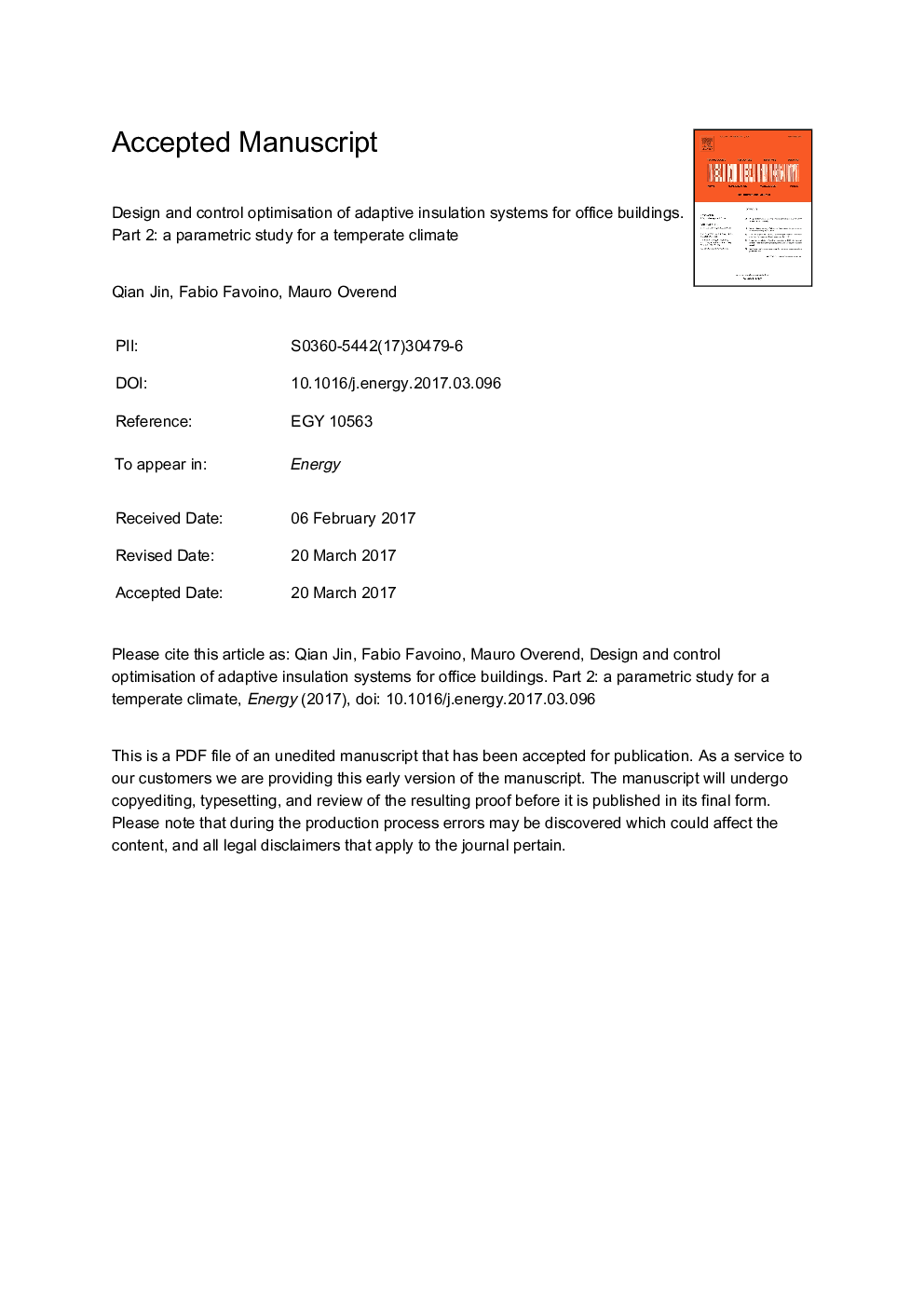| کد مقاله | کد نشریه | سال انتشار | مقاله انگلیسی | نسخه تمام متن |
|---|---|---|---|---|
| 5476838 | 1521424 | 2017 | 37 صفحه PDF | دانلود رایگان |
عنوان انگلیسی مقاله ISI
Design and control optimisation of adaptive insulation systems for office buildings. Part 2: A parametric study for a temperate climate
ترجمه فارسی عنوان
طراحی و کنترل بهینه سازی سیستم های انعطاف پذیر عایق برای ساختمان های اداری. قسمت 2: یک مطالعه پارامتری برای آب و هوای معتدل
دانلود مقاله + سفارش ترجمه
دانلود مقاله ISI انگلیسی
رایگان برای ایرانیان
کلمات کلیدی
عایق سازگار، شبیه سازی عملکرد ساختمان، مطالعه پارامتری، طراحی چند منظوره آب و هوای معتدل،
ترجمه چکیده
این مقاله دومین مطالعه دو بخش است که هدف آن ارزیابی عملکرد عایق سازگار است. قسمت 1 پیشنهاد یک چارچوب شبیه سازی برای بهینه سازی طرح های عایق بندی سازگار و پارامترهای کنترل، آن را توصیف اجرای آن و کیفیت استراتژی شبیه سازی را معتبر است. این مقاله دوم چارچوب شبیه سازی را با استفاده از یک مطالعه پارامتری بر نوع خاص ساخت ساختمان در یک منطقه خاص آب و هوا، برای بررسی پتانسیل عایق سازگار در این زمینه، به کار می برد. پیکربندی های مصنوعی سازگاری جایگزین و استراتژی های کنترل برای برنامه های کاربردی دیوار مات، برای یک اتاق اداری در آب و هوای معتدل شانگهای، به منظور بهینه سازی دو هدف طراحی: کل مصرف انرژی اولیه و راحتی حرارتی ارزیابی می شود. مشخص شده است که عایق انعطاف پذیر، زمانی که به درستی طراحی شده و کنترل می شود، به طور همزمان توانایی بهبود اهداف طراحی را دارد. برای مطالعه موردی در این مقاله، صرفه جویی در انرژی سالانه و بهبود راحتی حرارتی تا 50٪ می تواند توسط عایق سازگار در مقایسه با جایگزین عایق استاتیکی معادل بدست آید. بهبود عملکرد عایق انعطاف پذیر بستگی به گزینه های طراحی (جرم حرارتی، موقعیت عایق سازگار، طیف سوئیچینگ عایق) و استراتژی کنترل اتخاذ شده است.
موضوعات مرتبط
مهندسی و علوم پایه
مهندسی انرژی
انرژی (عمومی)
چکیده انگلیسی
This paper is the second of a two part study, which aims to evaluate the performance of adaptive insulation. Part 1 proposes a simulation framework for optimising adaptive insulation design and control parameters, it describes its implementation, and validates the simulation strategy qualitatively. This second paper applies the simulation framework, by means of a parametric study on a specific building typology in a particular climatic region, to explore the potential of adaptive insulation in this context. Alternative adaptive insulation configurations and control strategies for opaque wall applications are evaluated, for an office room in a temperate climate of Shanghai, in order to optimise two design objectives: total primary energy saving and thermal comfort. It is found that adaptive insulation, when properly designed and controlled, has significant potential to improve both design objectives simultaneously. For the case study considered in this paper, yearly energy savings and thermal comfort improvements of up to 50% could be achieved by adaptive insulation compared to an equivalent astatic insulation alternative. The performance improvements of the adaptive insulation depend on the design choices (thermal mass, position of the adaptive insulation, switching range of insulation) and control strategy adopted.
ناشر
Database: Elsevier - ScienceDirect (ساینس دایرکت)
Journal: Energy - Volume 127, 15 May 2017, Pages 634-649
Journal: Energy - Volume 127, 15 May 2017, Pages 634-649
نویسندگان
Qian Jin, Fabio Favoino, Mauro Overend,
